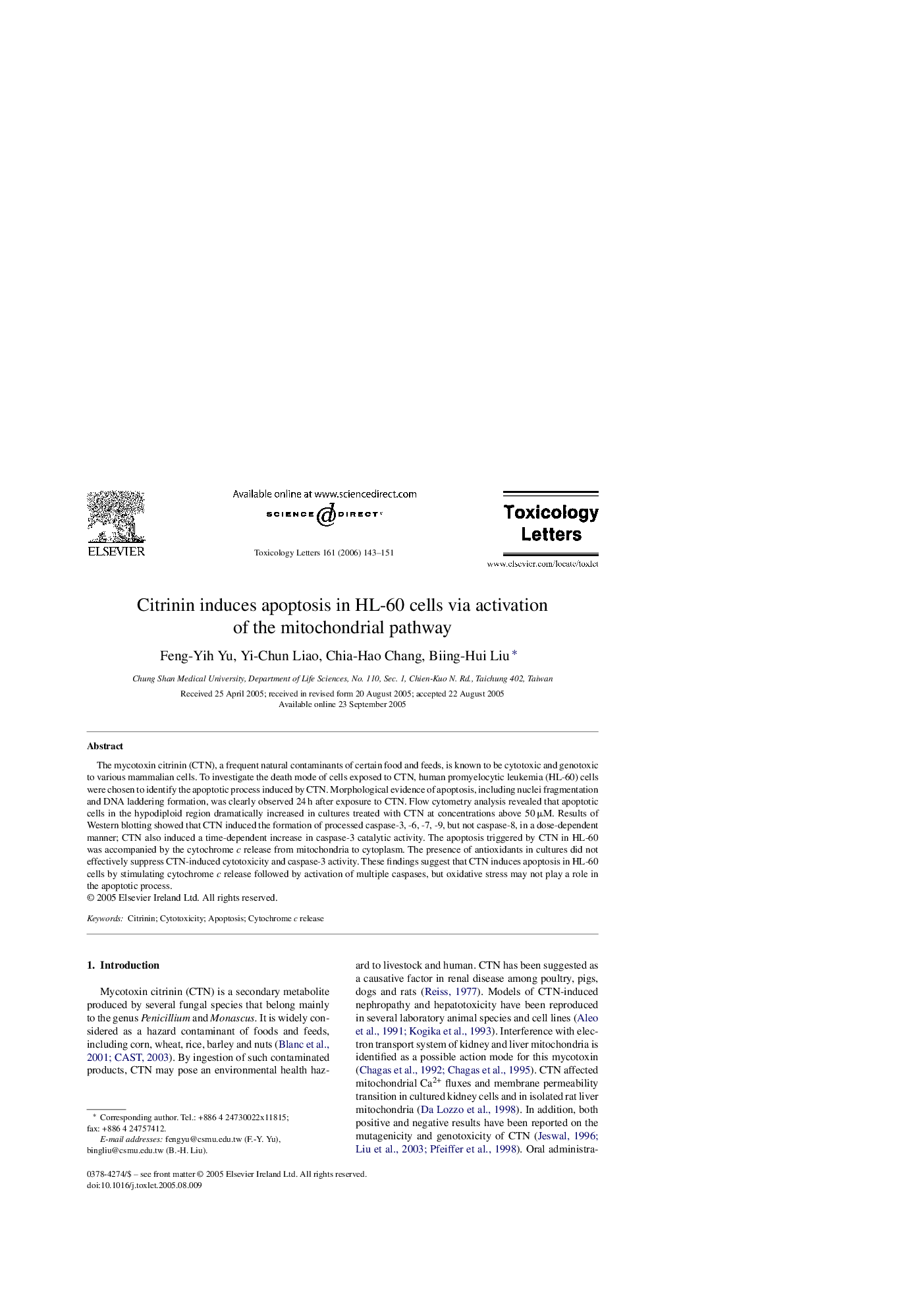| Article ID | Journal | Published Year | Pages | File Type |
|---|---|---|---|---|
| 2602003 | Toxicology Letters | 2006 | 9 Pages |
The mycotoxin citrinin (CTN), a frequent natural contaminants of certain food and feeds, is known to be cytotoxic and genotoxic to various mammalian cells. To investigate the death mode of cells exposed to CTN, human promyelocytic leukemia (HL-60) cells were chosen to identify the apoptotic process induced by CTN. Morphological evidence of apoptosis, including nuclei fragmentation and DNA laddering formation, was clearly observed 24 h after exposure to CTN. Flow cytometry analysis revealed that apoptotic cells in the hypodiploid region dramatically increased in cultures treated with CTN at concentrations above 50 μM. Results of Western blotting showed that CTN induced the formation of processed caspase-3, -6, -7, -9, but not caspase-8, in a dose-dependent manner; CTN also induced a time-dependent increase in caspase-3 catalytic activity. The apoptosis triggered by CTN in HL-60 was accompanied by the cytochrome c release from mitochondria to cytoplasm. The presence of antioxidants in cultures did not effectively suppress CTN-induced cytotoxicity and caspase-3 activity. These findings suggest that CTN induces apoptosis in HL-60 cells by stimulating cytochrome c release followed by activation of multiple caspases, but oxidative stress may not play a role in the apoptotic process.
